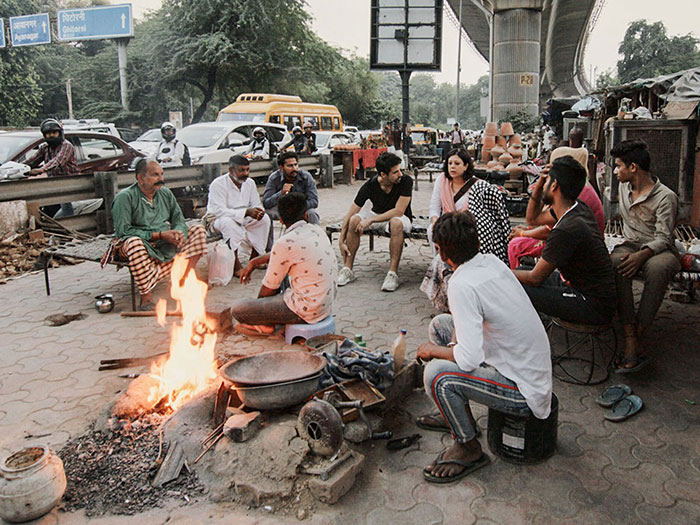E-mobility - racing towards environmental sustainability
Formula E Audi factory driver Lucas di Grassi is involved in a range of initiatives to promote electric mobility and is a UN ambassador for clean air. “The Race for Clean Air’” documents his visit to New Delhi, the city with the world’s worst air pollution.
Lucas di Grassi is Formula E’s most successful driver, and he has been racing in the competition since it began in 2014. Over the years, he has campaigned increasingly for electric mobility and has been a UN ambassador for clean air since the spring of 2018. For di Grassi and Audi alike, commitment to motorsport means more than just competition - it’s a practical way to promote sustainable mobility.
That’s why the Brazilian racing driver travelled to New Delhi to make the documentary “The Race for Clean Air.” With 28.5 million residents, India’s capital is the second-largest city in the world after Tokyo and it is the metropolis with the planet’s worst air pollution.
A poison called smog

During his journey di Grassi met people for whom the increasingly menacing smog and its consequences on their health are part of everyday life. Just like Shanti, a car mechanic who works in one of Delhi’s largest truck workshops. She used to work with her husband before he became ill and died as a result of pollution.
Air pollution kills nine million people worldwide per year, one million of them in India alone. Next, di Grassi visited one of New Delhi’s many streets built on stilts and he met men, women and children who were unaware of what they were inhaling every day. The air here pollutes your airways as much as smoking ten cigarettes a day.
Forms of pollution

The pollution is not just produced by the traffic or the many coal-fired industrial plants, but also by people themselves as a result of the open fires, which they use to heat, to cook and to burn garbage. “This trip was an eye-opener for me, because I witnessed at close range the direct effects that air pollution can have on people”, says di Grassi. “I understand that here the challenges are much greater and, above all, more complex than we think. There’s not just a single cause and no easy solution. That’s why the fight for clean air and the economic development of a country have to go hand in hand”.
The key question for a country like India is how to achieve sustainable economic growth in more environmentally compatible ways.
The role of electrification

“The electrification of mobility plays a key role in fighting air pollution”, emphasises di Grassi. India has made good progress in this respect. Of the country’s approximately 1.5 million three-wheeled rickshaws, 80% now have electric motors. In addition, by 2020, the number of electric cars in India, the fourth-largest car market in the world, is expected to increase to seven million.
Di Grassi’s trip also saw him visit Paharpur Business Centre in New Delhi, the city’s “healthiest” building. The office complex’s fresh air comes from outside air that has been conducted into a so-called “green room” on the roof, where plants filter out the pollutants by means of photosynthesis. The complexities of life in India left their mark on di Grassi who has already set his sights on other targets for his global e-mission: “I feel that it’s a moral duty to apply one’s professional knowledge to somehow making society better”, says the racing driver.
For his next project, in October 2020, di Grassi will be organising the first Latin American climate conference with a focus on new technologies for a CO2-neutral future.
Source: AUDI AG
